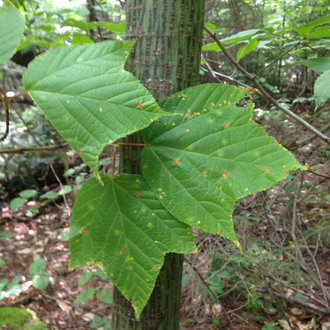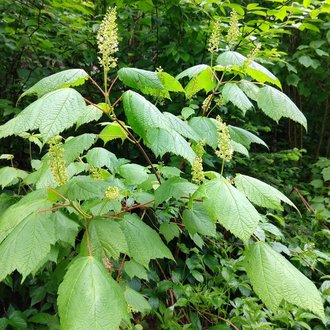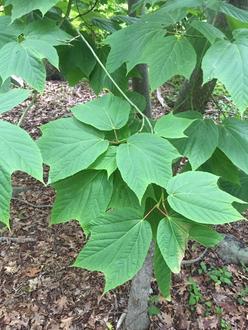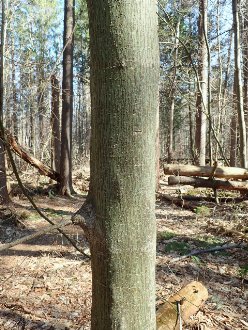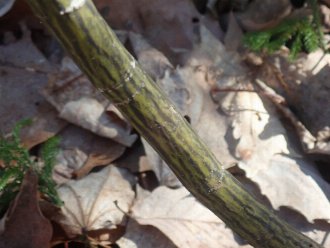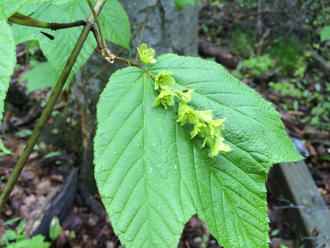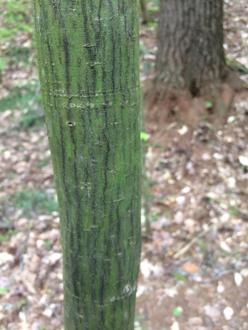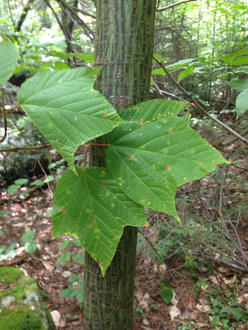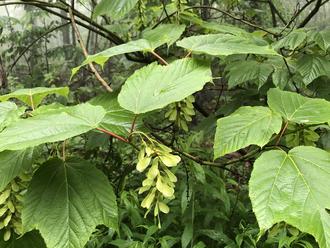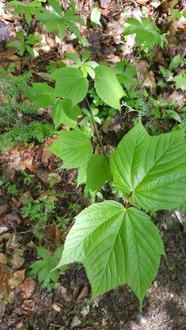Striped Maple (Acer pensylvanicum L.)
Also known as moosewood, moose maple.
↑Summary
A small maple that grows as a large shrub to medium-sized tree. Highly shade-tolerant. Found in cool forests of the northeast and at higher elevations in the Appalachians.
↑Range - Expand
| Legend | Color |
| Native | |
| Native or Not Present |
This tentative map is based on our own research. It may have limited data on Canada and/or Mexico, and there is some subjectivity in our assignment of plants as introduced vs. expanded. Read more in this blog post.
Although this plant occurs somewhere in each of these regions, it may only occur in a small part of some or all of them.
↑Similar Plants
↑Habitat
Striped maple is found in deciduous forests, on moist, acidic soils in valleys, and cool, north-facing slopes. It is mostly found in more northerly forest types, including northern hardwood (sugar maple-beech-yellow birch), spruce-fir, aspen-birch, and pine-dominated forests, but it also occurs in oak-hickory forests and forests containing northern red oak alongside some of the other northern hardwood associates. It is found in heavily to moderately shaded habitats, tolerating at most small gaps in the canopy, and is not competitive in habitats with more direct sunlight.
↑Life Cycle
Sprouts from seed, and often persists for years as a small understory shrub.
Seed production begins at 10 years of age, and seed production is consistent from year to year. However, small trees may produce very little seed, as few as 10 individual seeds.
Individual trees are either male or female, with only one flower type in a given year, but trees may change sex from year to year. Changes from male to female are much more common than vice-versa.
Trees are able to reproduce vegetatively by layering and resprouting from the base. Layering occurs relatively infrequently and represents only a small portion of total reproduction; basal sprouting is slightly more common but still much less common than reproduction by seed.
Trees reach best growth when small gaps develop that increase light to moderate levels; established trees already existing in such gaps can grow rapidly to reach their maximum size of about 50 feet (15 meters) and occupy these gaps for as long as 100 years. Other individuals may complete their entire lifecycle as an understory shrub.
Trees are moderately resistant to low-intensity fire, and can resprout if top-killed. Crown fires that burn only the upper canopy of a forest can benefit this species because it does not reach the canopy and is thus unaffected by these fires, and such fires create gaps that this species is poised to benefit from.
↑Links & External Resources
• Striped Maple | The Wood Database (About This Site)
• Striped Maple | Fire Effects Information System (FEIS) (About This Site)
• Acer pensylvanicum (Striped Maple) | USDA PLANTS Database (About This Site)
• Acer pensylvanicum | Go Botany (About This Site)
• Acer pensylvanicum (Snakebark Maple) | Missouri Botanical Garden Plant Finder (About This Site)
• Striped Maple | Virginia Tech Dendrology Factsheets (About This Site)
• Striped Maple | Silvics of North America (About This Site)
• Acer pensylvanicum | Biota of North America Project (BONAP) (About This Site)
• Acer pensylvanicum | NatureServe Explorer (About This Site)
• Striped Maple | Maryland Biodiversity Project (About This Site)
• Acer pensylvanicum L. (Striped Maple) | Digital Atlas of the Virginia Flora (About This Site)



